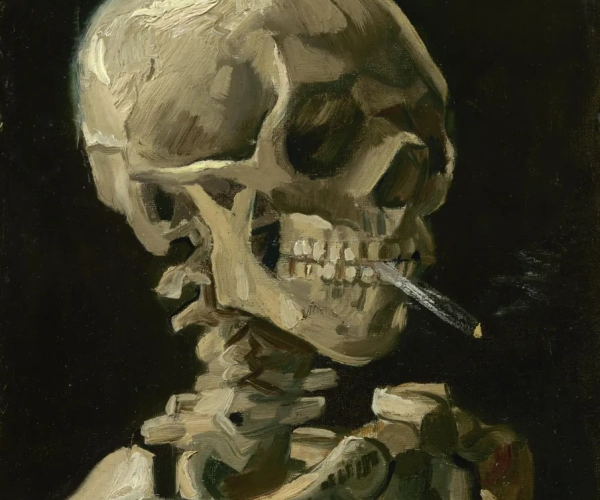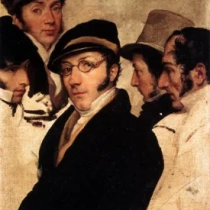Skull With Burning Cigarette
"Skull with Burning Cigarette," crafted by the illustrious Vincent van Gogh, is an evocative piece that distills the essence of the artist's profound exploration of mortality, existential angst, and the fleeting nature of life. Created during the winter of 1885-1886, this artwork diverges from Van Gogh's typical vibrant landscapes and poignant portraits, offering instead a stark, almost macabre representation. Van Gogh's choice to depict a skull, an emblem of death, is not just a nod to the traditional memento mori theme prevalent in art history but also a personal reflection of his ongoing struggle with mental anguish and societal alienation. The burning cigarette, incongruously placed between the teeth of the skull, injects a layer of irony and perhaps a subtle commentary on the self-destructive tendencies inherent in human nature. This anachronistic element disrupts the solemnity typically associated with such a subject, suggesting a defiance of the inevitable or perhaps a cynical acceptance of life's absurdities.
The technical aspects of the painting reflect Van Gogh's transition from the somber tones of his early Dutch period to the vivid color palette that would later define his career. The skull is rendered with a gritty realism, its ashen tones and hollow eye sockets contrasting sharply with the lively, almost playful flicker of the cigarette's ember. This juxtaposition accentuates the tension between life and death, vitality and decay – themes that Van Gogh repeatedly grappled with.
In "Skull with Burning Cigarette," Van Gogh not only challenges the viewer to confront the inevitability of mortality but also encapsulates a moment of personal introspection. This piece, less celebrated than his later works, is no less significant in understanding the complexities of his artistic journey. It's a stark reminder of the artist's deep introspection and his unflinching gaze into the darker corners of the human experience.







No Comments Yet...